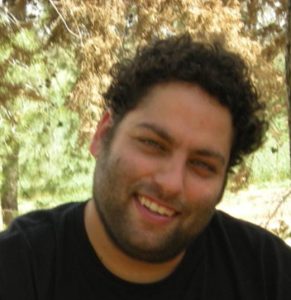פרופ' שי גבאי – Shai Gabay

Email:
sgabay@psy.haifa.ac.il
Affiliation Faculty / Department:
Department of Psychology , The Institute of Information Processing and Decision Making (IIPDM), University of Haifa.
Academic Background:
2012-2014 Post-Doc position under the supervision of Prof. Marlene Behrmann, Carnegie Mellon University.
2010-2011 Post-Doc position under the supervision of Prof. Avishai Henik and Dr. Nurit Gronau, The Open University, Israel.
2006-2012 PhD studies in Neuropsychology, Ben-Gurion University of the Negev. Summa cum laude. Adviser: Prof. Avishai Henik
2004-2006 MA studies in Neuropsychology, Ben-Gurion University of the Negev. Adviser: Prof. Avishai Henik
2001-2004 BA studies in Behavioral Science, Ben-Gurion University of the Negev.
Research Interests:
In real world situations, we can process only a limited amount of information. Consequently, our nervous system has to choose which information to process and which to ignore based on attentional orienting, the type of stimuli surrounding us and the value of these stimuli. The primary focus of my research is on the psychological and neural mechanisms underlying attentional orienting and object (object, word and face) recognition. Of particular interest is the interaction between higher and lower cortical systems and their influence on the way we perceive our surrounding world and scan it for relevant information. Throughout my research, I consider the influence of subcortical regions in many of the cognitive processes traditionally regarded as involving higher-order cerebral cortex. I take as a starting point the hypothesis that most cognitive processes are basic processes that should also be evident in some form in less evolved species. Most animals should have the ability to detect specific types of ‘object’ categories to have the ability to perform an optimal foraging and to orient attention to reinforcing locations. In contrast, most neuro-scientific research focuses mainly on cortical involvement in cognitive processes (perhaps because of the difficulty in imaging subcortical regions). The involvement of subcortical regions seems unjustifiably ignored.
My primary approach, experimental cognitive neuropsychology, involves studying the behavior of adults with focal lesions to the ocular motor visual system, functional magnetic resonance imaging (fMRI) investigations with normal and ocular motor-damaged subjects, transcranial magnetic stimulation (TMS) of normal participants as well as using the archer fish as a model for early evolutionary species. All of this is done while using well-established, robust experimental tasks. I adopt this multi-pronged approach to obtain converging evidence for the functional and neural mechanisms responsible for a range of complex mental operations involved in visual cognition.
Home Page URL:
https://fishecnlab.wix.com/ecnlab
